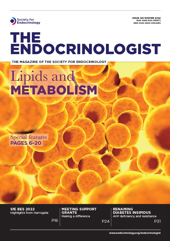Inherited dyslipidaemia can be monogenic or polygenic. There are around 25 well-established monogenic dyslipidaemias. Familial hypercholesterolaemia, the best-known monogenic dyslipidaemia, is an autosomal dominant condition, associated with a raised low-density lipoprotein (LDL) cholesterol level and, consequently, accelerated atherosclerosis. Polygenic dyslipidaemias, on the other hand, result from multiple common genetic variations. Genetic testing is beneficial for the diagnosis of suspected monogenic dyslipidaemias, with cascade testing available for family members of confirmed cases.1
TRADITIONAL TREATMENTS FOR INHERITED DYSLIPIDAEMIAS
Statins2
Statins inhibit 3-hydroxy-3-methylglutaryl coenzyme A (HMG-CoA) reductase, a key enzyme in cholesterol production in the liver, to upregulate the LDL receptor and reduce the LDL cholesterol level in the circulation.
Statin treatment is generally well-tolerated. However, perceived statin intolerance is a major problem. The efficacy and safety of statins for the primary and secondary prevention of cardiovascular diseases are also well-established.
High intensity statin therapy (such as atorvastatin 80mg/day or rosuvastatin 40mg/day) can lower LDL cholesterol by up to 60%. However, alone, this is insufficient to achieve guideline-recommended LDL cholesterol levels in most cases of familial hypercholesterolaemia.
Ezetimibe3
Ezetimibe blocks Niemann–Pick C1-like 1 protein, to inhibit intestinal cholesterol absorption. It can decrease LDL cholesterol by around 20%. It is a safe and efficacious agent used either as a monotherapy or as an add-on to a statin.
Fibrates4
The main effect of fibrates (peroxisome proliferator-activated receptor-α agonists) is the reduction of triglycerides. They can lower triglyceride levels by reducing production by the liver and by speeding up their removal.
Although fibrates do not show much effect in lowering LDL cholesterol, they can be used in combination with a statin in patients suffering both high LDL cholesterol and high triglycerides. Fenofibrate does not interfere with the metabolism of statins and is considered the safest fibrate to use with a statin, if necessary.
'Genetic testing is beneficial for the diagnosis of suspected monogenic dyslipidaemias, with cascade testing available for family members of confirmed cases.'
Lipoprotein apheresis5
This is a highly efficient, but time-consuming and expensive, method for removal of excessive lipoproteins from the blood, including LDL cholesterol, lipoprotein(a) and triglyceride-rich lipoproteins. For half a century, it has been the therapy of last resort for dyslipidaemias that cannot otherwise be controlled.
Although new potent lipid-lowering drugs have recently been introduced, lipoprotein apheresis still plays an important role in managing homozygous familial hypercholesterolaemia and, less often, other forms of dyslipidaemia.
NOVEL LIPID-LOWERING MEDICATIONS
PCSK9 monoclonal antibodies6
Proprotein convertase subtilisin/kexin type 9 (PCSK9) protein helps to breakdown LDL cholesterol receptors, so more cholesterol can remain in the bloodstream. Human PCSK9 monoclonal antibodies, evolocumab and alirocumab, were introduced to the UK market in 2016. They can lower LDL cholesterol levels by up to 75% and significantly reduce cardiovascular risk.
Aggressive lowering of LDL cholesterol by PCSK9 monoclonal antibodies has been accompanied by a favourable safety profile. NICE guidelines recommend that PCSK9 monoclonal antibodies are considered in patients with familial hypercholesterolaemia if LDL cholesterol is >5mmol/l in primary prevention and >3.5mmol/l in secondary prevention. PCSK9 monoclonal antibodies are administered every two weeks as a subcutaneous injection.
Inclisiran7
Inclisiran is a novel small interfering RNA which prevents the production of PCSK9 protein. It is the first small interfering RNA-based therapy in the area of cardiovascular disease, and lowers LDL cholesterol by around 50%.
Inclisiran was introduced to the UK last year. It has safety data for up to three years, and the evidence is accumulating for its long term use. However, long term cardiovascular outcome data are still awaited.
NICE guidance has recommended inclisiran for patients with established cardiovascular disease if LDL cholesterol is persistently >2.6mmol/l. Compared with PCSK9 monoclonal antibodies, the dosing regimen of inclisiran (initial, three-month booster and then six-monthly subcutaneous injection) has the advantage of allowing administration by healthcare professionals and consequently increased adherence.
Bempedoic acid8
Bempedoic acid inhibits ATP citrate lyase, an enzyme upstream of HMG-CoA reductase, in the cholesterol synthesis pathway. It is a daily-dosing oral tablet that reduces LDL cholesterol by around 25% when given alone, and by around 40% when given in a fixed-dose combination with ezetimibe.
Bempedoic acid is a pro-drug which is converted to the active form mostly in the liver. This limits the muscle-related side effects when compared with statins. NICE guidance has recommended the use of bempedoic acid in patients who cannot tolerate statins or fail to achieve treatment targets with statin treatment.
NEW HORIZONS
In these ways, several new treatment options have recently become available for patients with inherited dyslipidaemias. The future may include therapies based on gene editing to combat these conditions. CRISPR gene editing targeted at PCSK9 may represent a promising tool to achieve lifelong LDL cholesterol reduction.9
Wei Yang and Jaimini Cegla
Specialty Registrar and Consultant in Metabolic Medicine, Imperial College London
REFERENCES
1. Brown EE et al. 2020 Journal of Clinical Lipidology 14 398–413.
2. Pang J et al. 2020 Current Atherosclerosis Reports 22 64.
3. Katsiki N et al. 2013 Current Pharmaceutical Design 19 3107–3114.
4. Kim NH et al. 2020 Diabetes & Metabolism Journal 44 213–221.
5. Thompson G et al. 2019 Current Atherosclerosis Reports 21 26.
6. Rosenson RS et al. 2018 Journal of the American College of Cardiology 72 314–329.
7. Soffer D et al. 2022 Journal of Clinical Lipidology doi: 10.1016/j.jacl.2022.06.009.
8. Ruscica M et al. 2022 Current Atherosclerosis Reports 24 791–801.
9. Walker HE et al. 2021 Metabolites 11 857.





